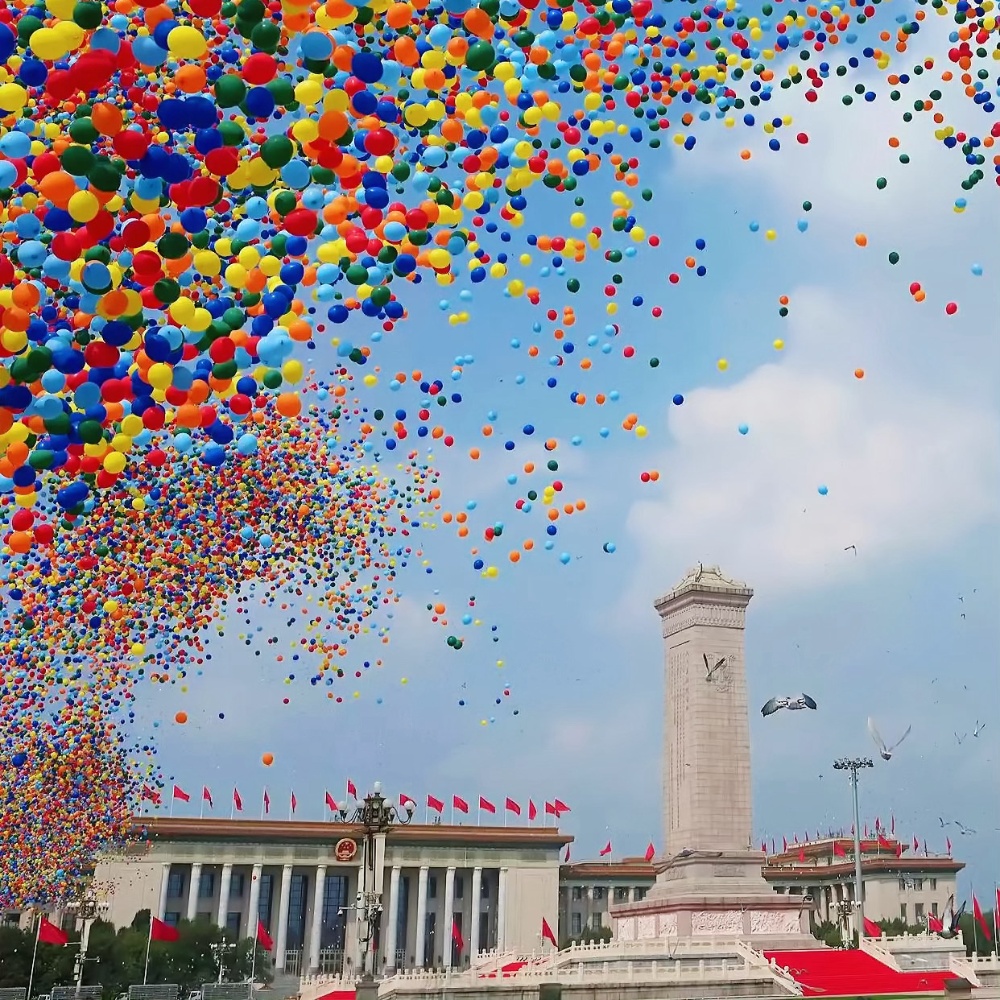A Grand Military Parade on September 3rd: A Tribute to the Great Victory!
On the morning of September 3, 2025, Tiananmen Square once again became the focus of the world’s attention. Against the backdrop of fluttering red flags and the solemn Monument to the People’s Heroes, the resounding footsteps of marching troops echoed like thunder across Chang’an Avenue. Their gazes were unwavering, their formations flawless, and their spirit embodied the majesty of a great nation.
Today marks the 80th anniversary of the victory of the Chinese People’s War of Resistance Against Japanese Aggression and the global victory in the World Anti-Fascist War. Eight decades ago, after 14 long years of bitter sacrifice and unyielding struggle, the Chinese people finally crushed the brutal Japanese militarist invaders and made an indelible contribution to the global struggle for peace and justice.
This great victory, as leaders and historians have so often proclaimed, “is forever engraved in the annals of the Chinese nation and forever inscribed in the chronicles of humanity’s just cause.”
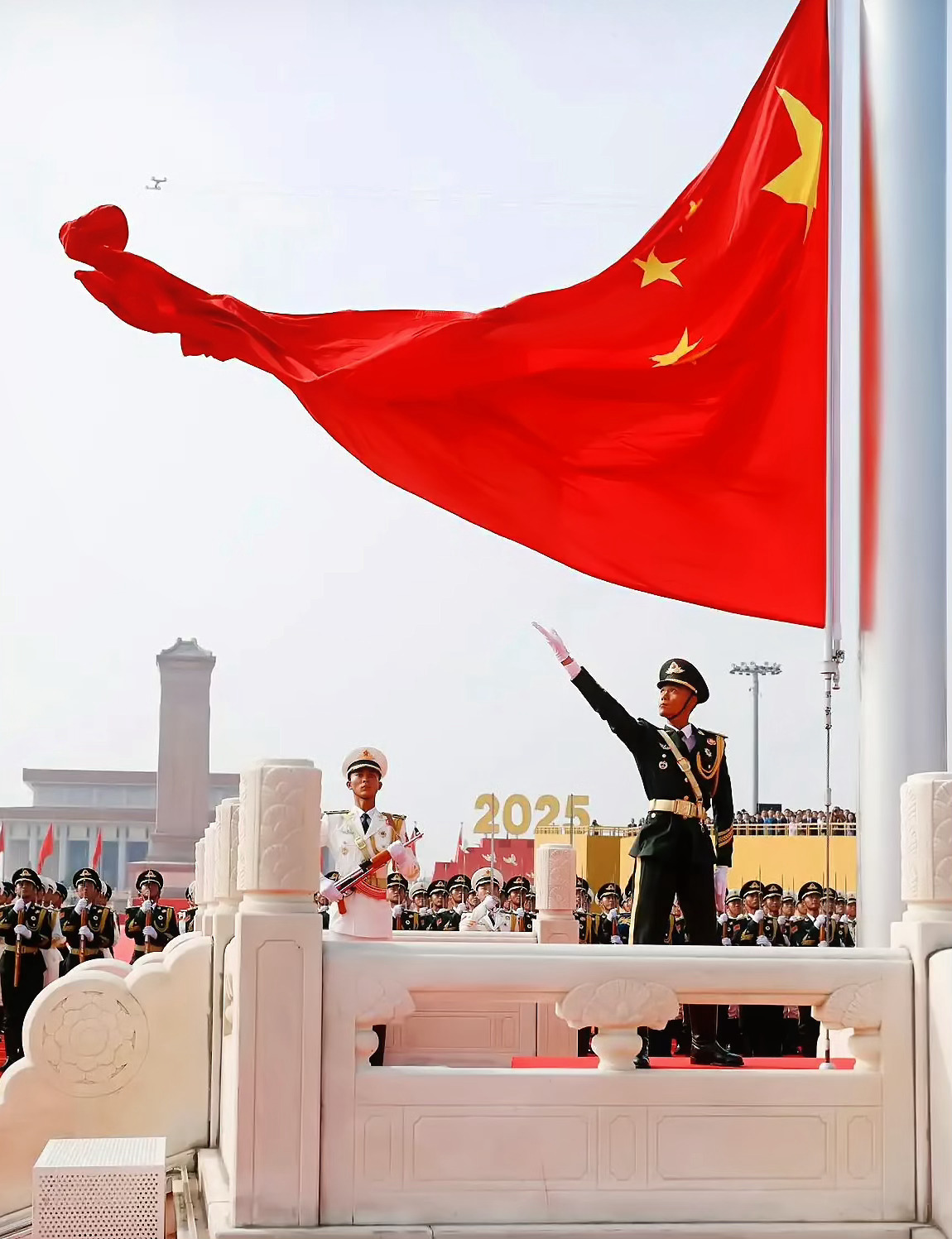
1. A Historic Ceremony in Tiananmen Square: The Pride of a Great Power
At precisely 9:00 a.m., the grand ceremony began. Tiananmen Square, adorned with banners, flowers, and filled with thousands of citizens and guests, witnessed a 70-minute military parade that symbolized both remembrance of the past and confidence in the future.
The parade followed two major stages: the inspection and the march-past. First, the reviewing officers inspected the troops assembled along Chang’an Avenue, their formations immaculate, their eyes brimming with pride. Then came the march-past, in which different formations—representing air, land, sea, and new technological forces—passed through Tiananmen Square in solemn order.
The sequence included the Air Flag Guard, Foot Columns, Battle Flag Columns, Equipment Columns, and the Air Columns. A total of 45 echelons were displayed.
The Helicopter Air Flag Guard opened the parade. A fleet of helicopters flew in tight formation, some trailing banners, others forming characters in the sky. Their presence declared to the world an unshakable truth: justice will prevail, peace will prevail, and the people will prevail.
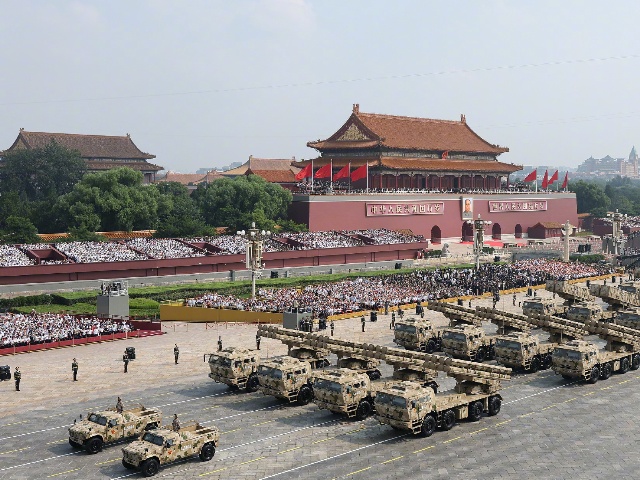
2. Old and New Forces: A Living Legacy of Struggle
The Foot Columns embodied the duality of tradition and modernity—“one old and one new.”
The “old” represented the honored veterans and historical units of the War of Resistance: the Eighth Route Army, the New Fourth Army, the Northeast Anti-Japanese United Army, the South China Guerrillas, and the militias from anti-Japanese base areas. Their inclusion was a moving tribute to the countless fighters who once shed blood for the nation’s survival.
The “new” reflected the restructured, modern armed forces, highlighting China’s “three-in-one” system of integrated land, sea, and air power. Young soldiers, representing a new generation, marched with disciplined vigor, showing the continuity of national defense across time.
Following them came the Battle Flag Columns, carrying banners that had once flown in decisive battles of the War of Resistance. Each flag was not just cloth, but a symbol of sacrifice, bravery, and victory. These relics of honor were borne by today’s soldiers, affirming that the spirit of their predecessors still lives on.
The Equipment Columns demonstrated China’s modern combat strategies. They included specialized groups for land warfare, maritime defense, air defense and missile interception, information warfare, unmanned operations, logistical support, and strategic strike forces. Each formation rolled forward with cutting-edge armored vehicles, missile systems, and communication platforms—many never before seen by the public.
Finally, the Air Columns soared across the Beijing sky, showcasing early warning aircraft, modern fighters, strategic bombers, and heavy transport planes. The sheer diversity and coordination reflected the comprehensive strength of the People’s Liberation Army.
3. Intelligent Equipment: The Rise of High-Tech Defense
This parade did not merely revisit history; it presented the future. The defining theme was intelligence—technology that connects, automates, and empowers modern warfare.
All equipment displayed was domestically developed and already in active service. Unlike past parades, where individual weapons were highlighted, this time the emphasis was on combat modules—showing how different forces integrate seamlessly in joint operations.
According to Wu Zeke, deputy head of the organizing group, three aspects stood out:
Dominance of Fourth-Generation Equipment – Advanced tanks, aircraft, and missile systems formed the backbone, reflecting China’s leap into world-class defense capabilities.
The Rise of Unmanned Systems – Drones, robot vehicles, and autonomous platforms appeared in unprecedented numbers, signaling the dawn of a new era of combat.
Strategic Weapons on Display – Hypersonic missiles, integrated sea-air defense systems, and long-range deterrence weapons underscored the nation’s capacity to safeguard sovereignty.
On land, intelligent tanks and armored vehicles featured digital fire-control systems and networked command links. In the skies, drones and early warning aircraft showcased artificial intelligence, capable of independent perception and decision-making. Even in naval forces, unmanned surface and underwater vehicles took center stage.
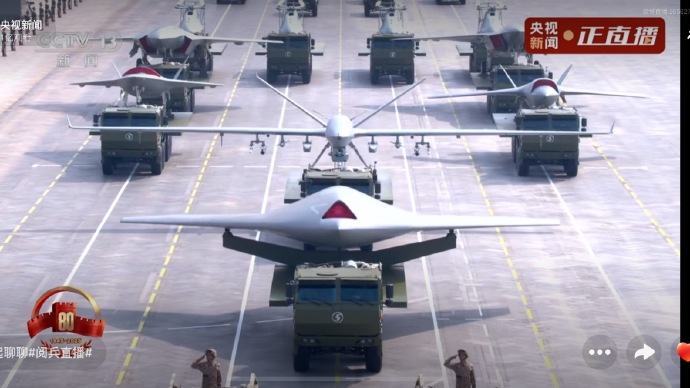
4. Unmanned Equipment: The Protagonist of Future Warfare
Among all the displays, unmanned systems stole the spotlight. These were not just prototypes but fully deployable combat assets.
In the skies, drone formations demonstrated diverse functions. Reconnaissance drones conducted wide-area surveillance; specialized recognition drones identified key targets; multi-role drones combined reconnaissance with precision strikes. The WZ-7, for example, conducted radar sweeps of vast regions, while the WZ-10 provided close-in identification of high-value targets.
On the seas, the Type 076 amphibious assault ship drew awe. Equipped with an electromagnetic catapult, it could launch stealth combat drones, effectively serving as a “drone carrier.” Working with unmanned surface ships and underwater vehicles, the fleet could conduct mine-laying, patrols, and anti-submarine missions over long durations without risking human lives.
On land, robotics proved equally versatile. From quadruped robot “dogs” patrolling perimeters, to unmanned heavy transport vehicles hauling supplies, to autonomous engineering platforms clearing explosives, these machines were ready for real battlefield use. They reflected how warfare is shifting from manpower-intensive to technology-driven strategies.
5. National Commemoration: From North to South, Across the Straits
While Beijing hosted the central parade, commemorations swept across the nation.
In Fujian Province, the exhibition “Great Victory” opened with over 320 photographs and 290 artifacts. Divided into five sections, it traced Fujian’s contribution to the resistance and the sacrifices of local fighters.
In Liaoning Province, a grand choral performance titled “Victory and Peace” gathered 32 choirs and 1,400 performers. Divided into four chapters, they sang over 30 classic songs, evoking both sorrow and pride.
In Hong Kong, a solemn ceremony took place at the Garden of Remembrance at City Hall. The Police Rifle Guard of Honor fired a salute to fallen martyrs, followed by two minutes of silence observed by attendees.
Such activities, from mainland to Hong Kong, from museums to choirs, embodied a single theme: remembering history and cherishing peace.
6. The Spirit of Resistance: Eternal and Unyielding
Eighty years ago, China was impoverished and fragmented. Yet, through the collective resistance of over 400 million people, the nation endured unimaginable suffering to secure victory. That triumph was not only a military one—it was moral, cultural, and spiritual.
Eighty years later, a rejuvenated China stands tall. The world witnesses a nation prosperous, modernized, and determined never to relive the humiliations of its past.
At commemorative events, personal testimonies captured this spirit. Wang Jin, an 82-year-old veteran participating in Liaoning’s choral performance, said:
“As a veteran, this commemoration is especially meaningful. When we sang about the victory, tears filled my eyes. I thought of my comrades, of the hardships we endured, and I felt both grief and pride.”
From the younger generation came equally powerful voices. Eleven-year-old Jiang Ziyu, a Young Pioneer, declared:
“I admire the spirit of our predecessors. I will learn from them and serve my country when I grow up.”
From elders who once endured war to children who now inherit peace, the message is unified: the past must never be forgotten, and the future must be built with vigilance and dedication.
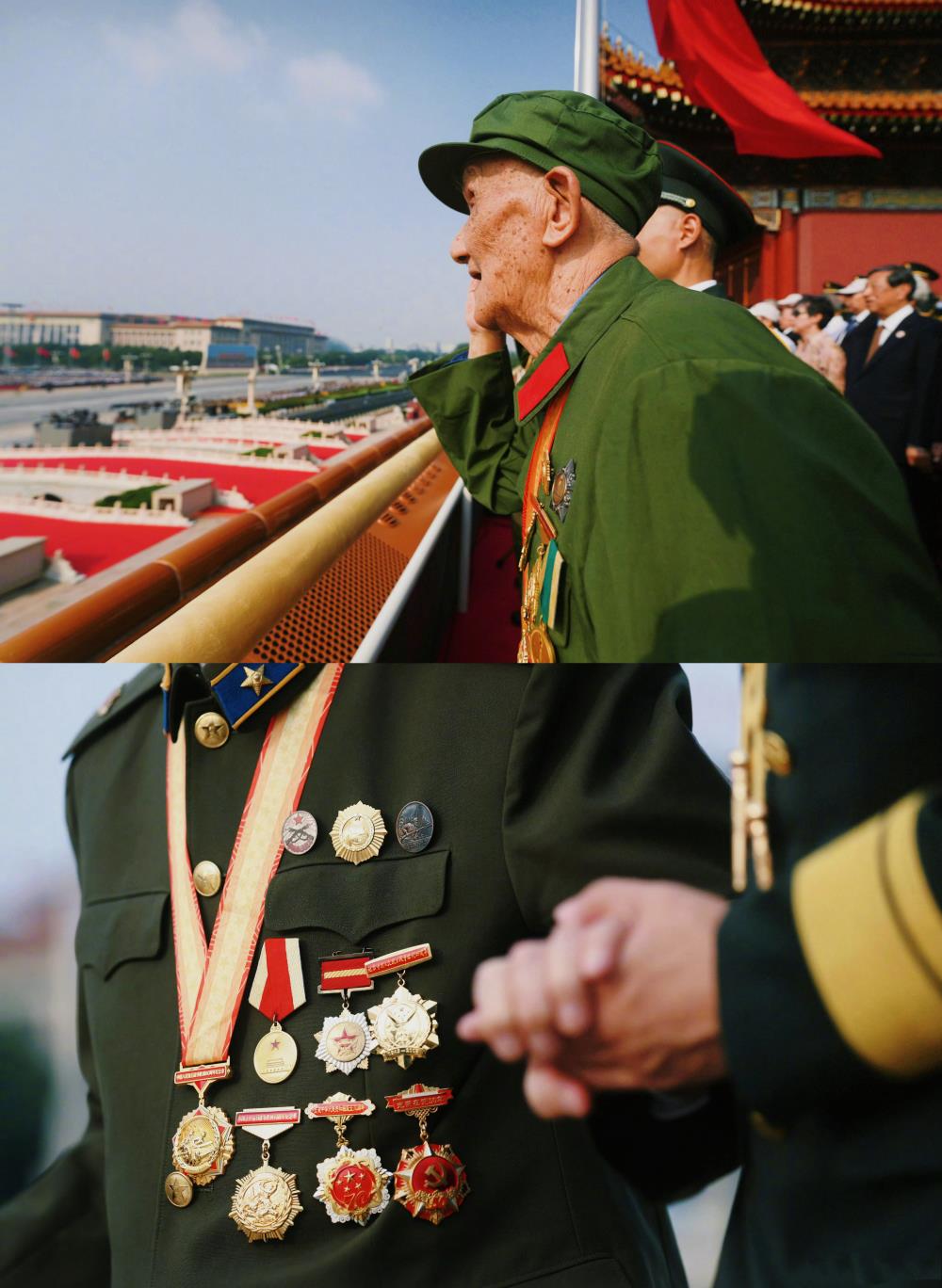
7. From Victory to Rejuvenation: A Journey Unfinished
The smoke of war has long vanished, yet its lessons remain. The trumpet of vigilance still sounds, urging each generation to remain resolute. Today’s military parade was not simply a demonstration of strength—it was a hymn of gratitude, a reminder of sacrifice, and a declaration of progress toward national rejuvenation.
On Tiananmen Square, soldiers stood like pine trees, their steps synchronized, their rifles gleaming. Each movement carried the weight of history and the promise of tomorrow.
From the War of Resistance to today’s rejuvenation, the Chinese people have turned suffering into strength, despair into determination, and victory into a foundation for peace. The parade on September 3rd, 2025, was therefore more than ceremony—it was a symbol of an unbroken spirit that will guide the nation toward new triumphs.
Conclusion: Eternal Memory, Eternal Responsibility
Eighty years have passed since victory was won. Yet, the echoes of the soldiers’ footsteps, the cries of martyrs, and the aspirations of generations still resound across the land.
The grand parade was both a tribute to the past and a pledge for the future. It reminded the world that justice, peace, and the people’s will are forces no aggressor can ever crush.
From veterans with tears in their eyes to children with dreams in their hearts, from flags fluttering over Tiananmen to songs sung across provinces, the commemoration of September 3rd reaffirmed a timeless truth:
Justice will prevail. Peace will prevail. The people will prevail.
